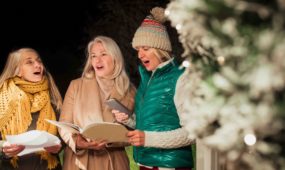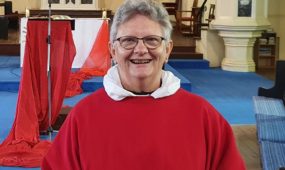‘Jesus, Saviour of the World’
Hymns
“This hymn is a very useful addition to our repertoire of congregational hymnody, of course, and also has other more nuanced possibilities. For example, the first two lines of each verse might be sung by a soloist or small group, with the congregation joining in the repeated final line each time. Or it might be used as a quiet background during intercessions, with the final line used as the people’s repeated spoken response to the prayers,” says The Rev’d Canon Dr David Cole

‘Jesus, Saviour of the world, come in mercy, set us free. We look to you to save and help us.”
We have many resources to help us worship in special ways through the Lenten season. Some date back many centuries, drawing on the wisdom of the ages. The canticle ‘Salvator mundi’ (Latin for “Saviour of the world”) is one such resource, having inspired great liturgical music and great paintings, including the celebrated work of the same name by Leonardo da Vinci – the world’s most expensive painting.
Advertisement
We find this text as the second canticle for Friday morning in the APBA daily service (p.414). It has been recommended as a suitable replacement for the ‘Benedictus’ in Sunday’s Morning Prayer, and is especially useful in Good Friday liturgies. It is also found in the Roman Catholic Liturgy of the Hours.
This ancient prayer features as a paraphrase set to simple music for congregations in Songs of Grace* (#789) in which both author and composer draw on the Lutheran tradition.
The text is by the late David Schubert (1942-2008), editor, translator and writer. He was a member of the commission on worship of the Lutheran Church of Australia and was a long-standing member of the Australian Hymn Book Editorial Committee that produced the widely-used Together in Song.
The music is by Sue Westhorp, a composer and former choir director at St Paul’s Lutheran Church in Box Hill, Melbourne. She has been a significant contributor to Lutheran worship and music resources and served on the National Ecumenical Church Music Committee.
Advertisement
Sue’s setting is well matched to David’s paraphrase, including the final line, “We look to you to save and help us”, which comes at the end of each three-line verse. The tune is simple and easy to pick up, enabling the mind and heart to quickly make the prayer one’s own.
Tracing the roles of Jesus as the one who saves and redeems us, and who participates in and understands human need, the song prays for freedom from sin and a life-long close relationship. It looks to the opportunity to sing God’s praise and to the promise of Christ’s coming again in glory. And after each of these focus prayers comes the repeated, “We look to you to save and help us”.
This hymn is a very useful addition to our repertoire of congregational hymnody, of course, and also has other more nuanced possibilities. For example, the first two lines of each verse might be sung by a soloist or small group, with the congregation joining in the repeated final line each time. Or it might be used as a quiet background during intercessions, with the final line used as the people’s repeated spoken response to the prayers.
The simple accompaniment enhances the beauty of the song, reminding us of the power of ancient texts to touch our hearts in surprising ways – just as it has inspired much more complex choral settings, and famous visual art.
* Songs of Grace: Supplement to Together in Song, Australian Hymn Book II is published by Australian Church Resources and is available on the Australian Church Resources website in a paperback book and CD.





